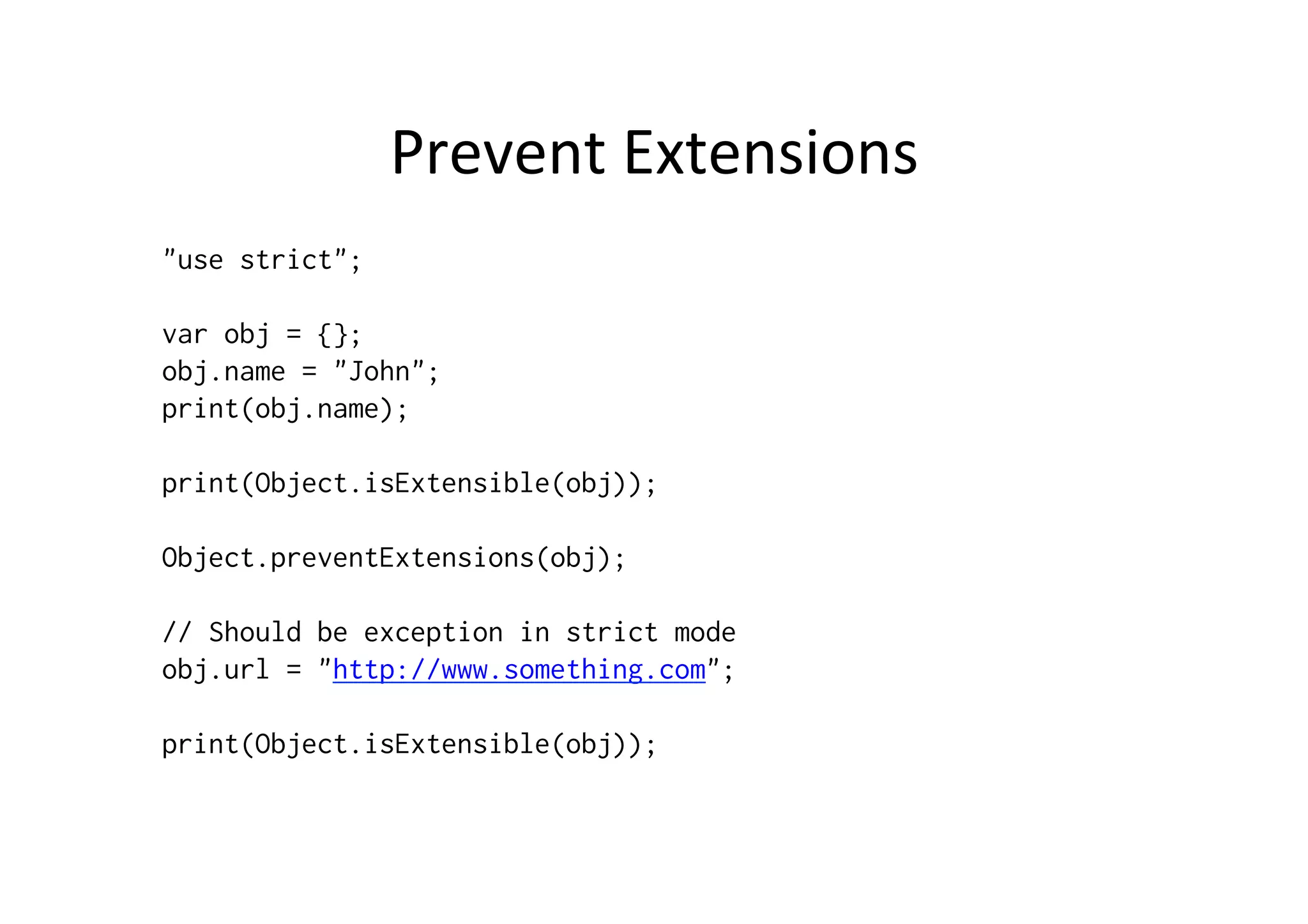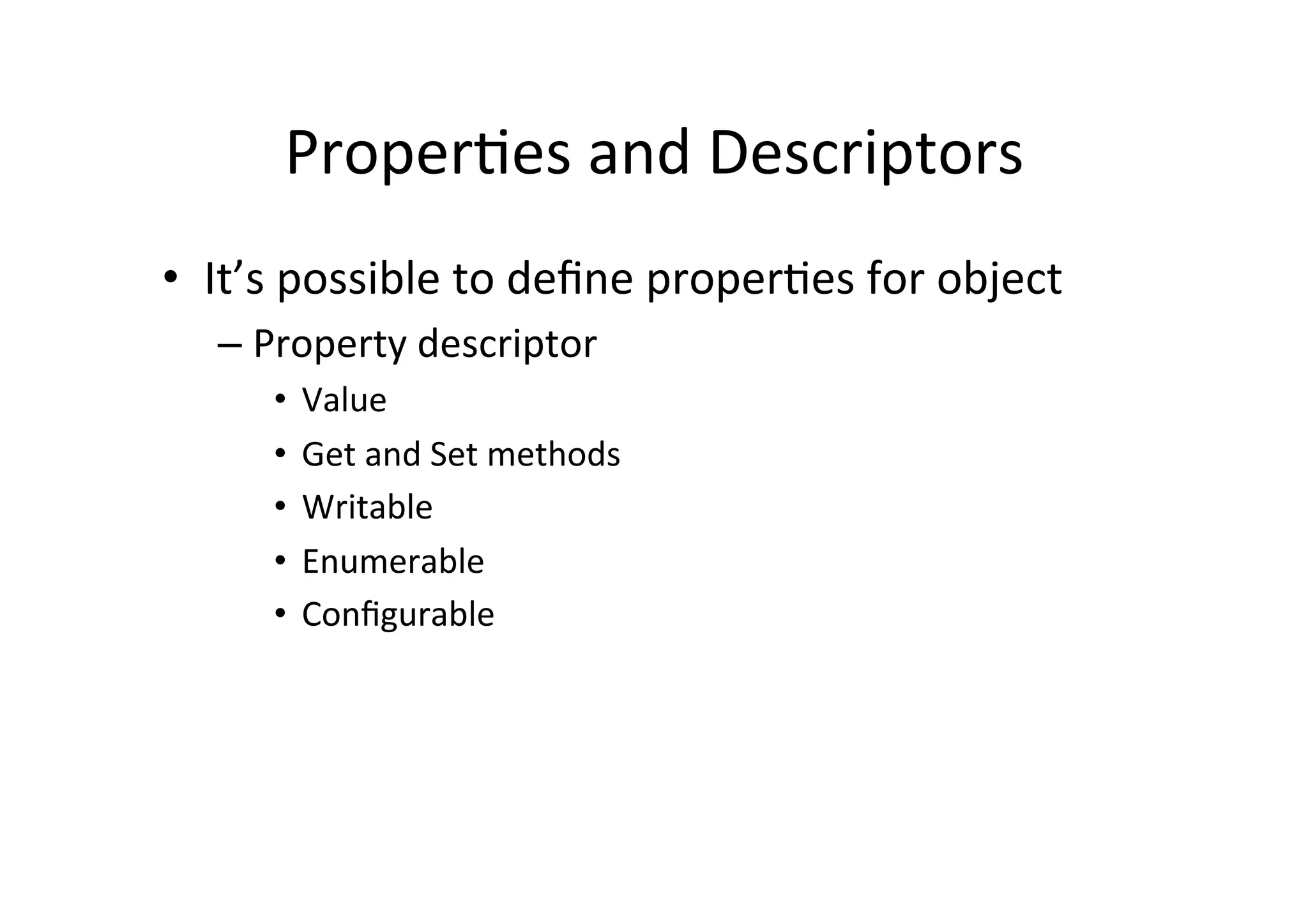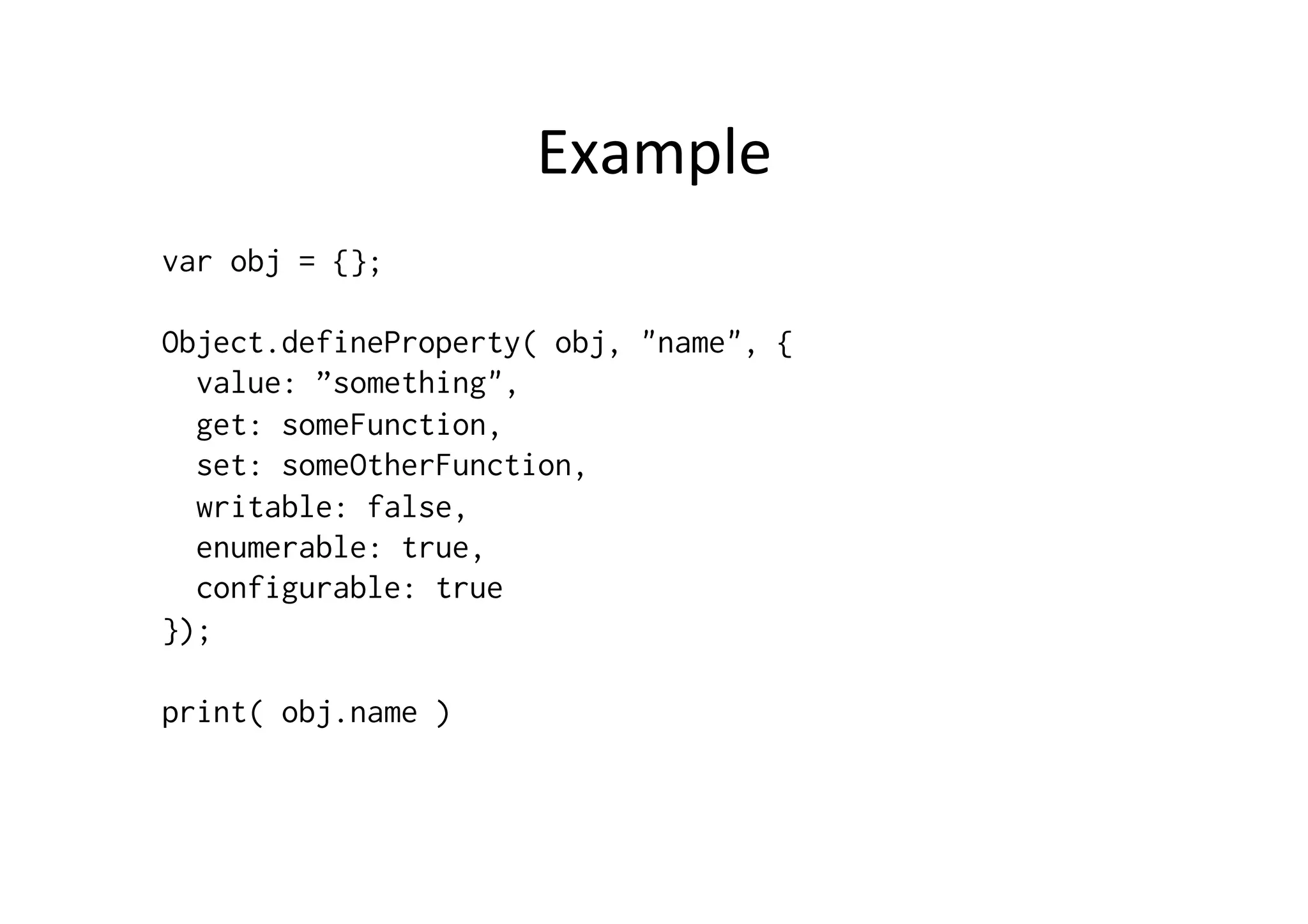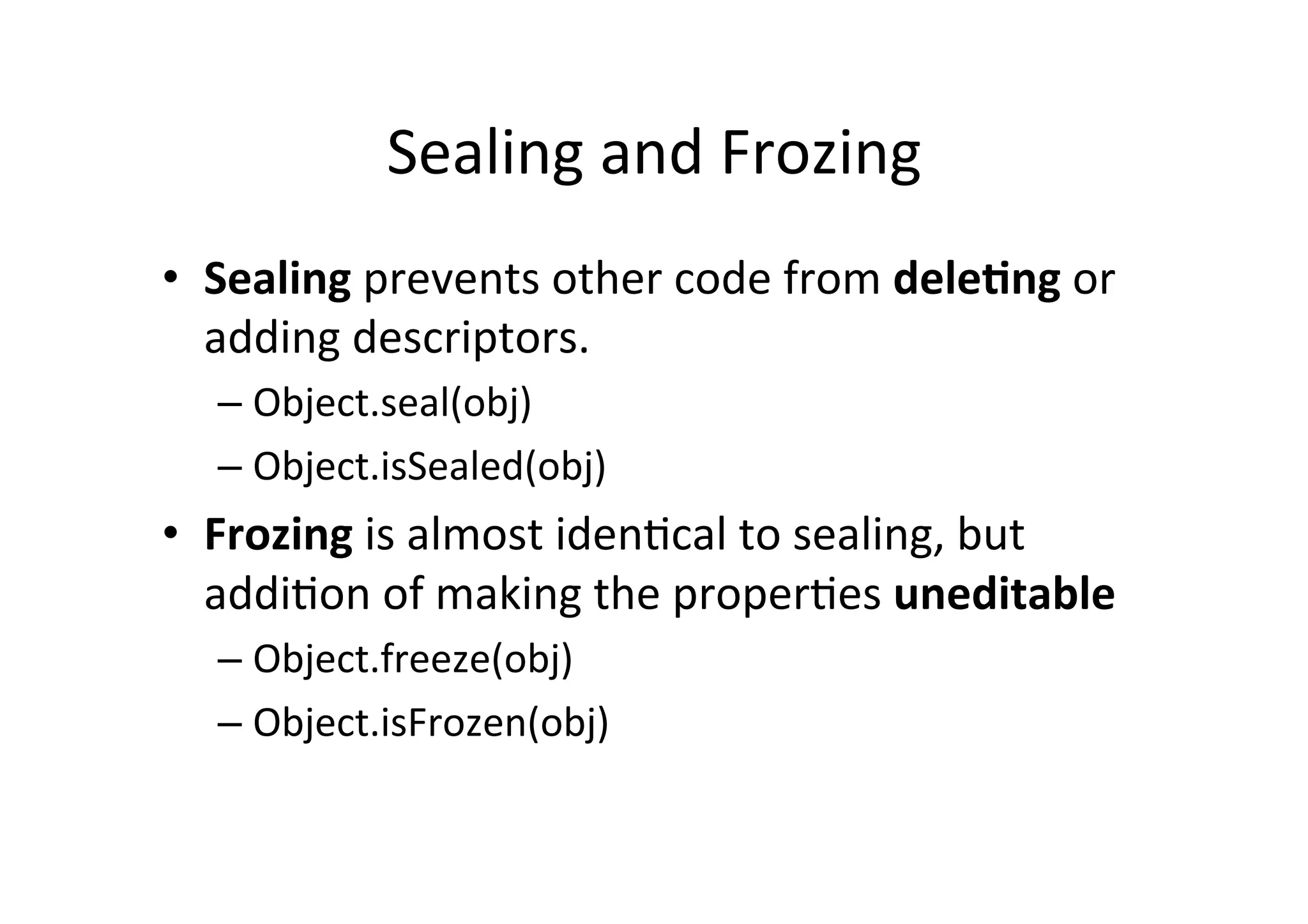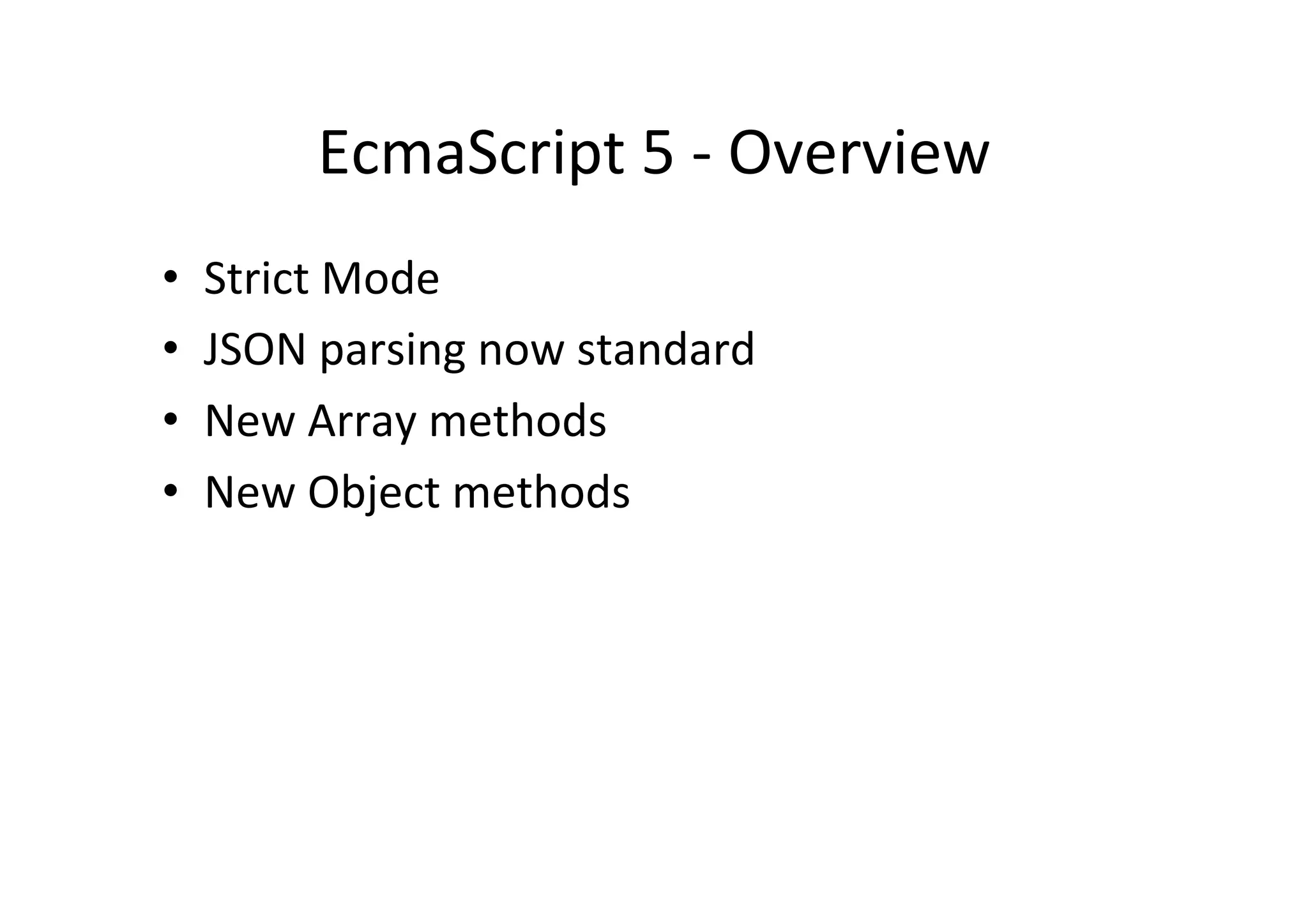This document provides a short introduction to ECMAScript and highlights some key features of ECMAScript 5 including: strict mode which detects bad programming practices; new native JSON object for parsing and stringifying JSON; new methods added to the Array and Object prototypes like indexOf, map and freeze; and property descriptors which allow defining getter/setter methods for object properties.


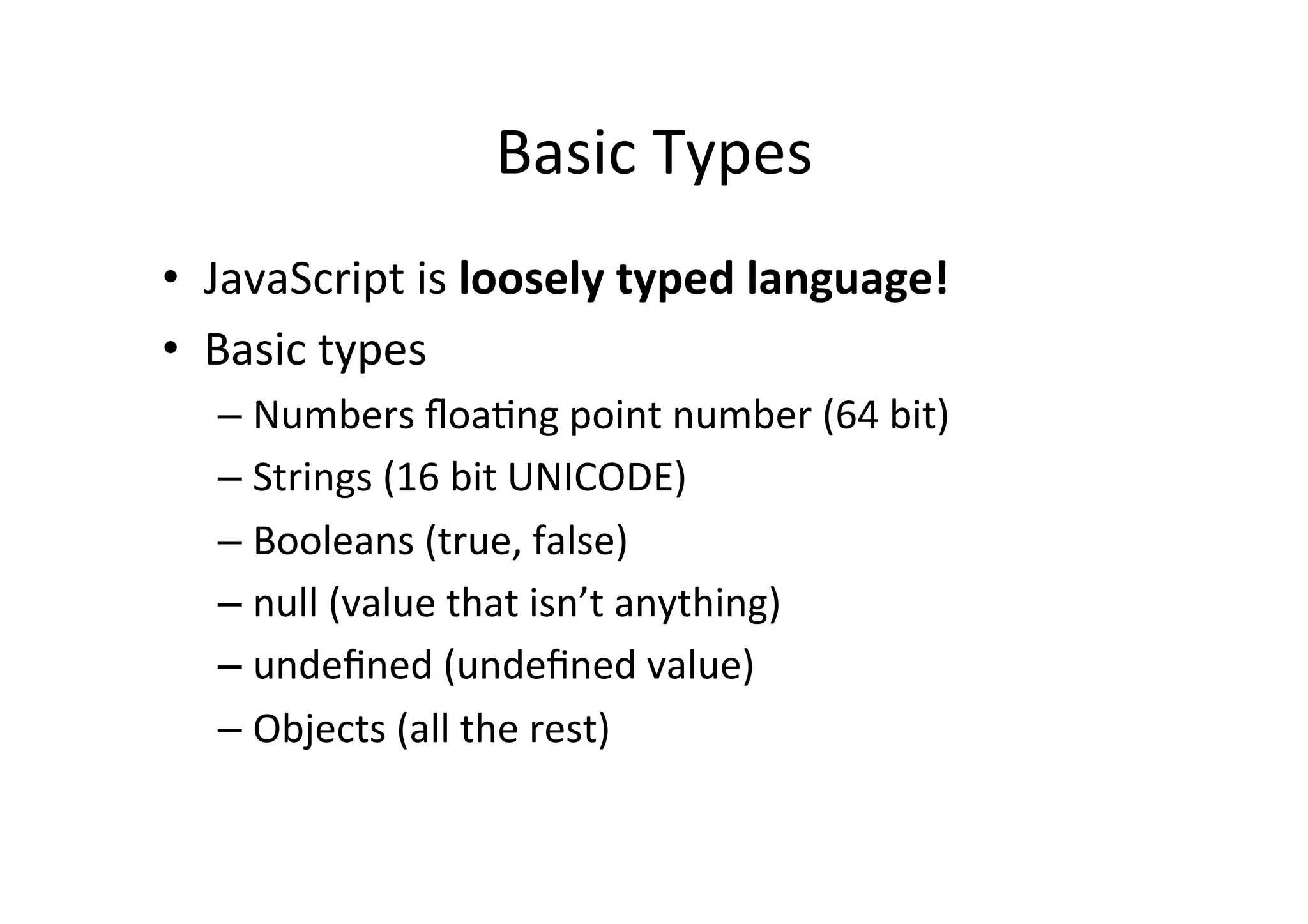
![About
Numbers
• Number(value)
– var i = Number(“12”);
• parseInt(value[,
radix])
– var i = parseInt(“12”, 10);
– Radix?
• 10
=>
decimal
number,
8
=>
octal
number,
16
=>
hexadecimal
• While
this
parameter
is
opBonal,
always
specify
it
to
eliminate
reader
confusion
and
to
guarantee
predictable
behavior.
Different
implementa9ons
produce
different
results
when
a
radix
is
not
specified.
• NaN
(Not
a
Number)
– Result
of
erroneous
operaBons](https://image.slidesharecdn.com/ecmascript-130915054939-phpapp01/75/Short-intro-to-ECMAScript-4-2048.jpg)
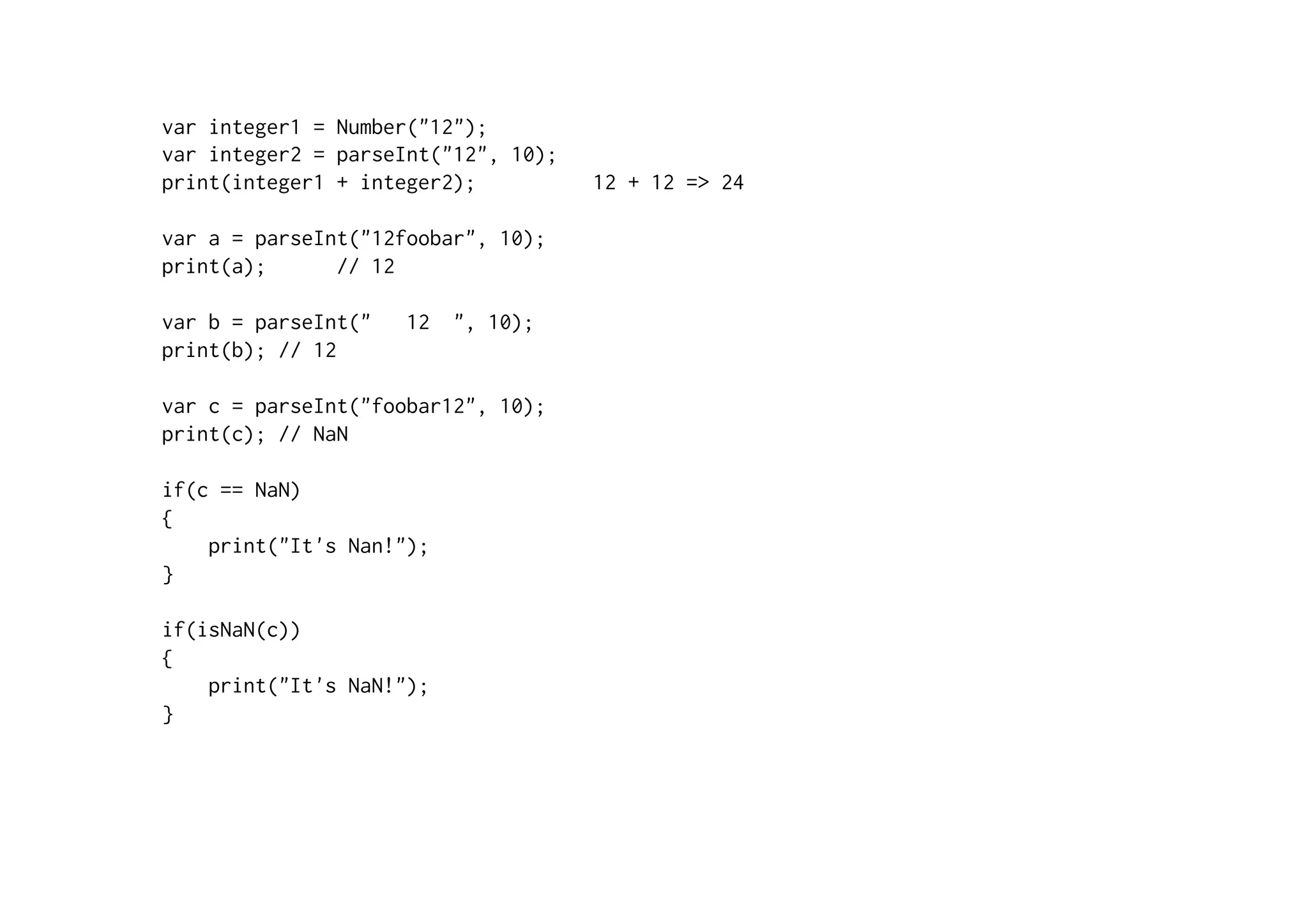
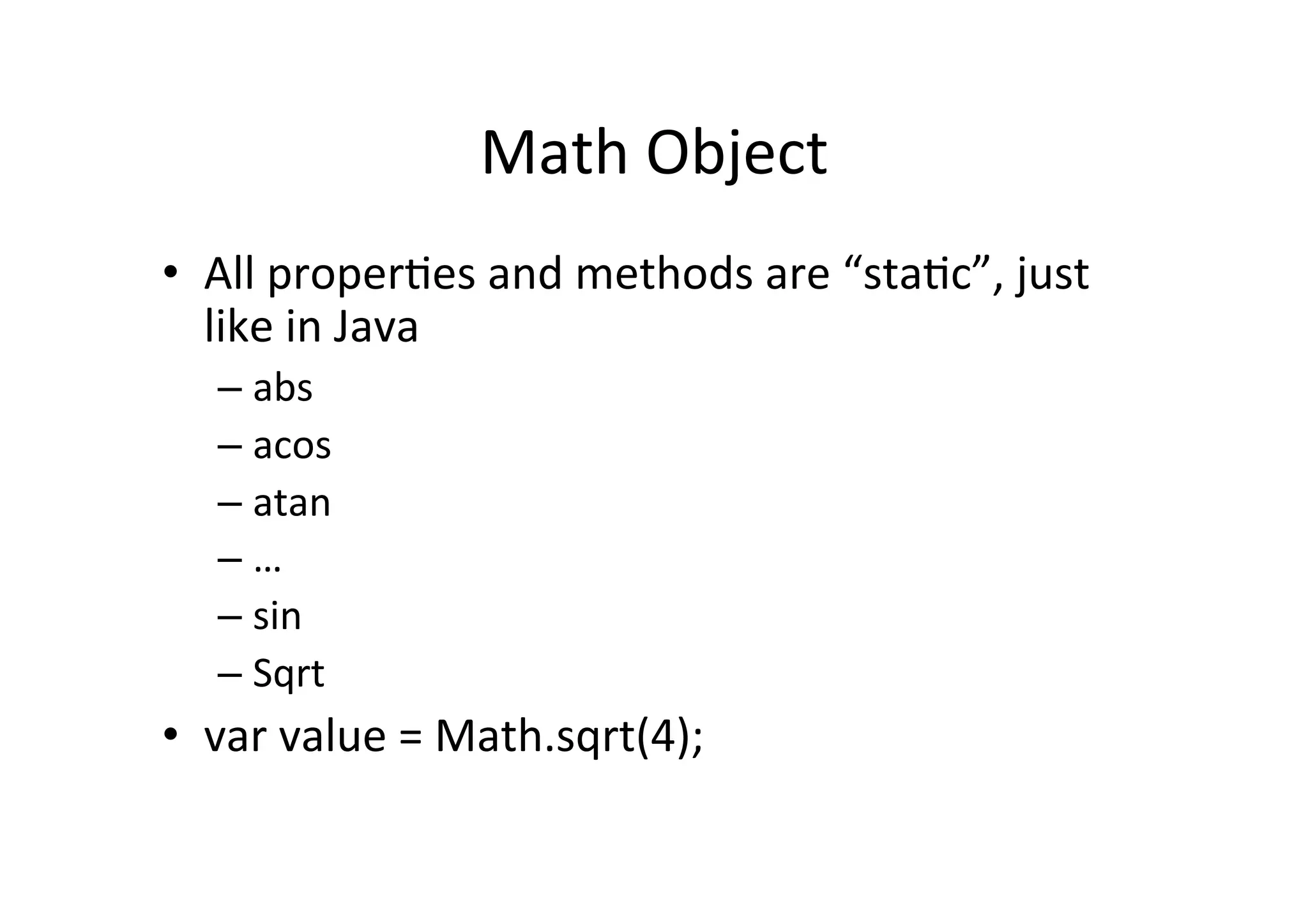
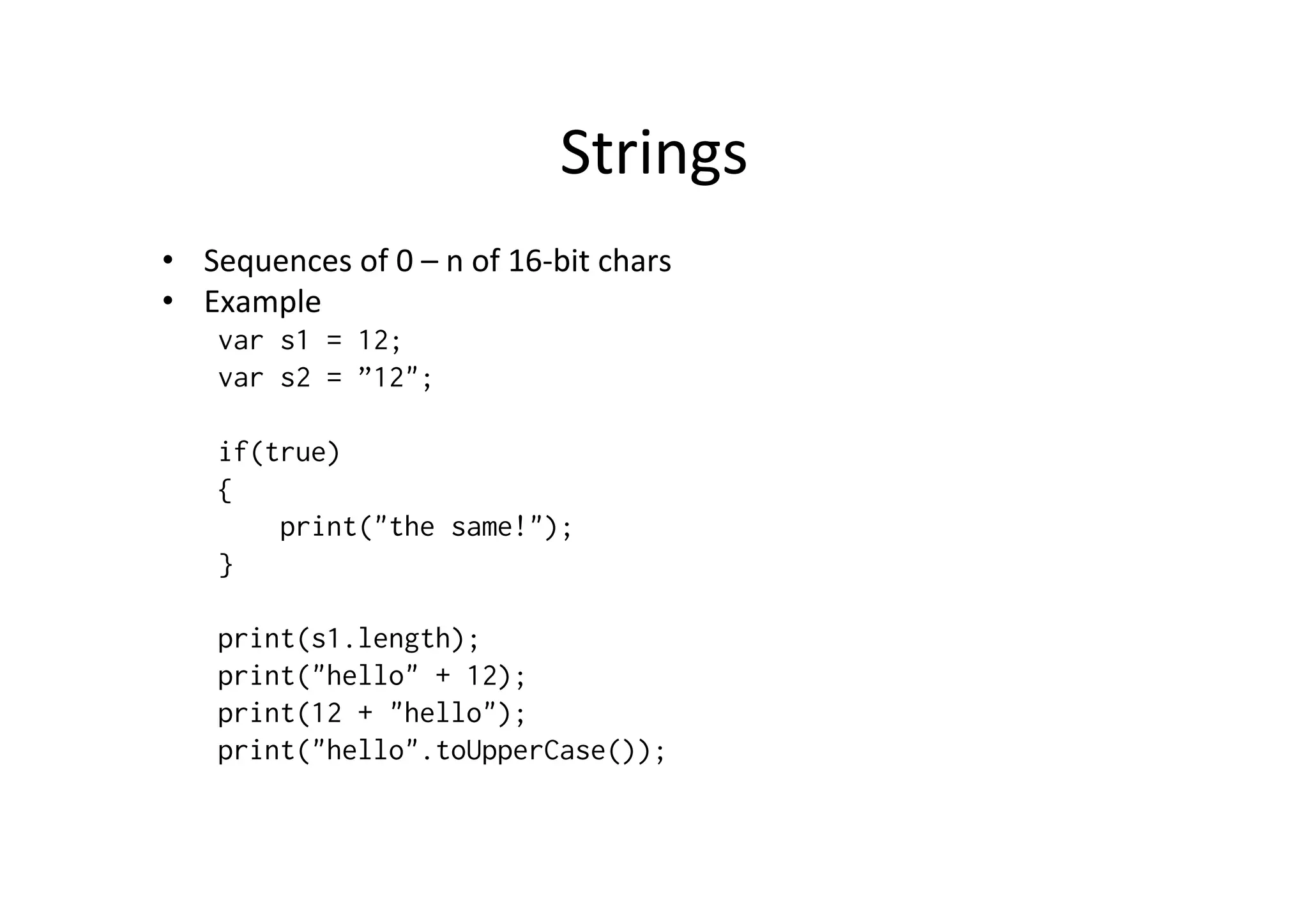
![True
or
false?
var myArray1 = [false, null, undefined, "", 0,
NaN];
// EcmaScript 5 feature!
// Iterate the array
myArray1.forEach(function(entry)
{
if(entry)
{
print(entry);
}
});](https://image.slidesharecdn.com/ecmascript-130915054939-phpapp01/75/Short-intro-to-ECMAScript-8-2048.jpg)
![True
or
false?
var myArray1 = ["false", "0", "undefined", "NaN"];
// EcmaScript 5 feature!
// Iterate the array
myArray1.forEach(function(entry)
{
if(entry)
{
print(entry);
}
});](https://image.slidesharecdn.com/ecmascript-130915054939-phpapp01/75/Short-intro-to-ECMAScript-9-2048.jpg)
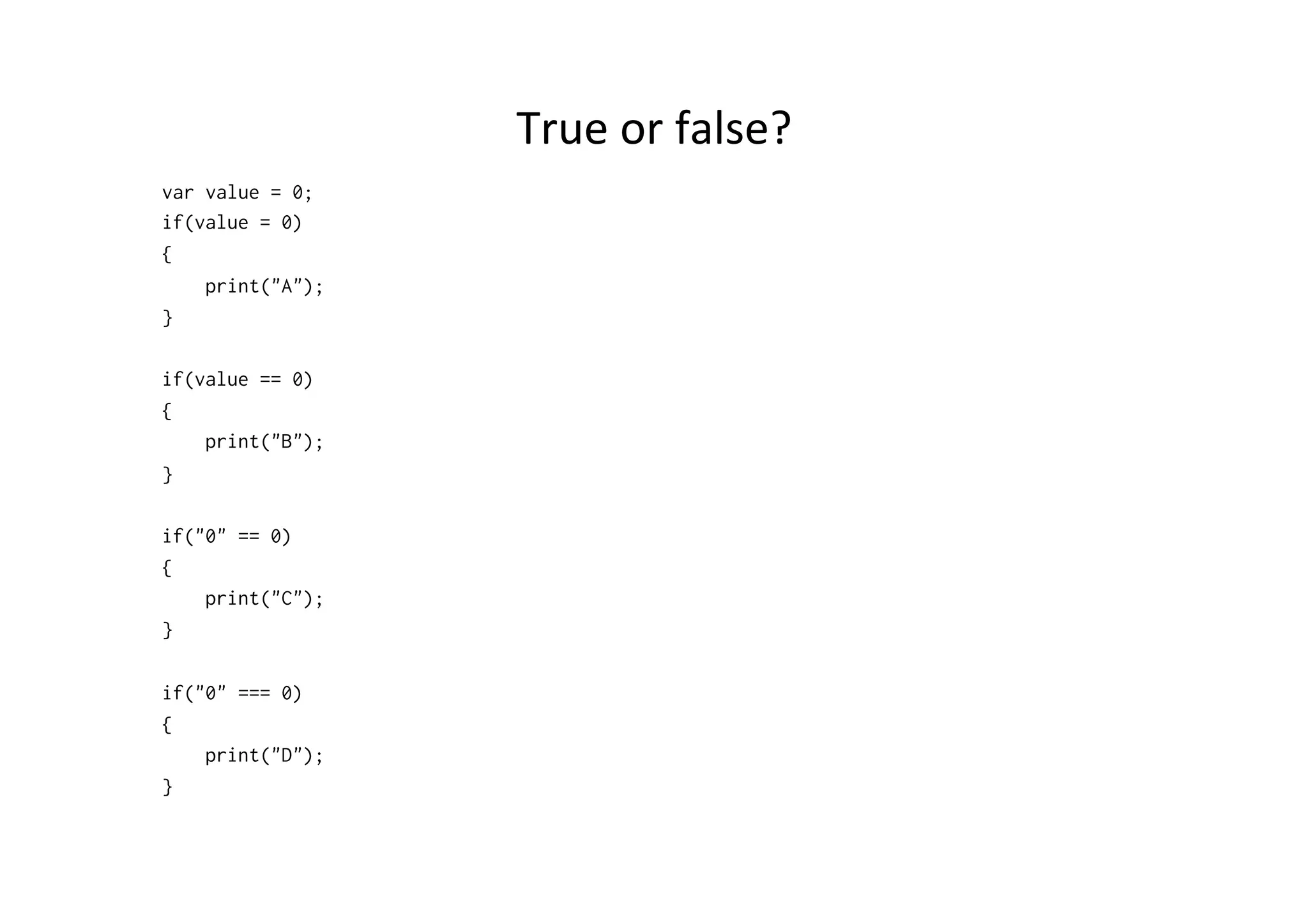
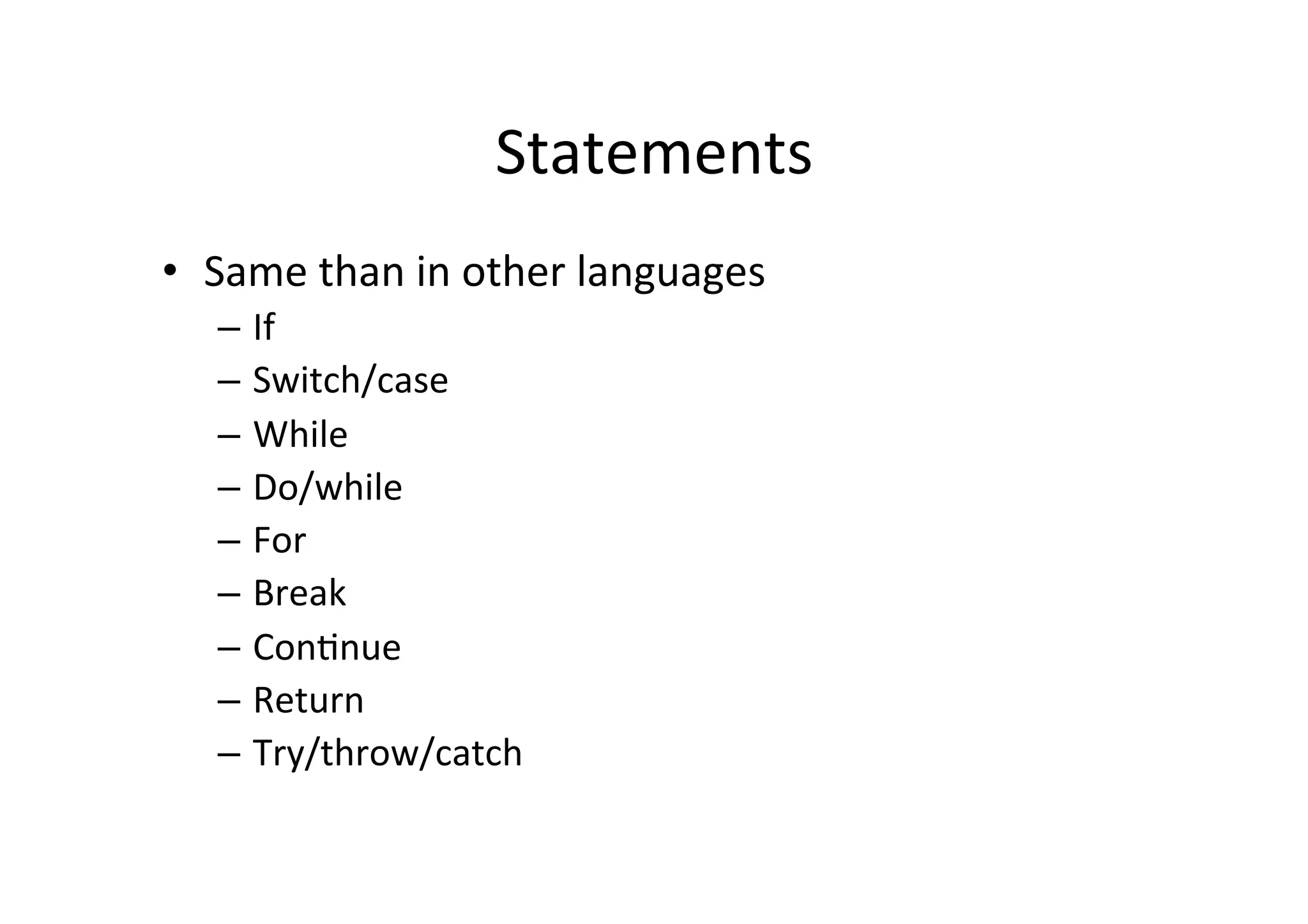
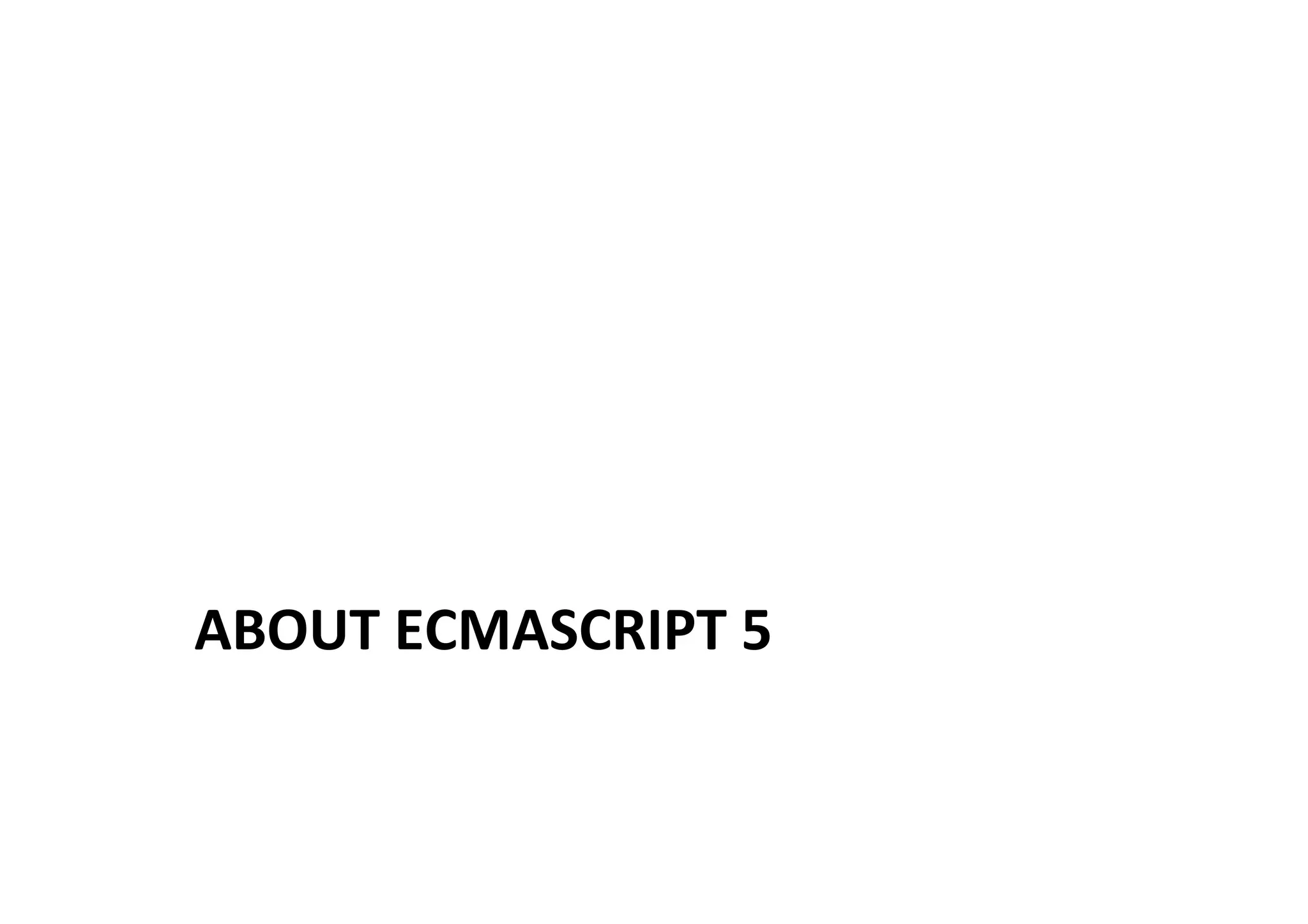
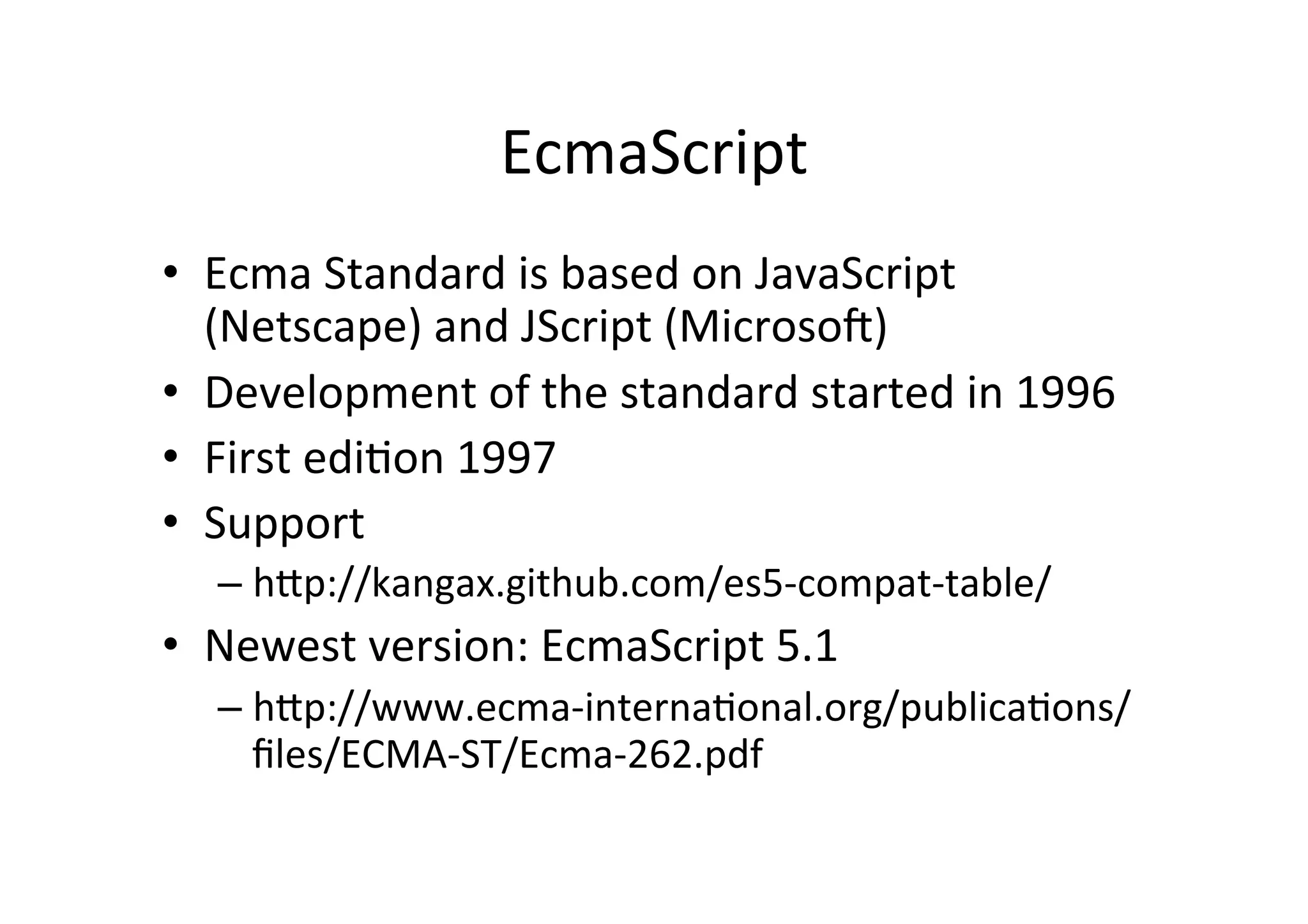
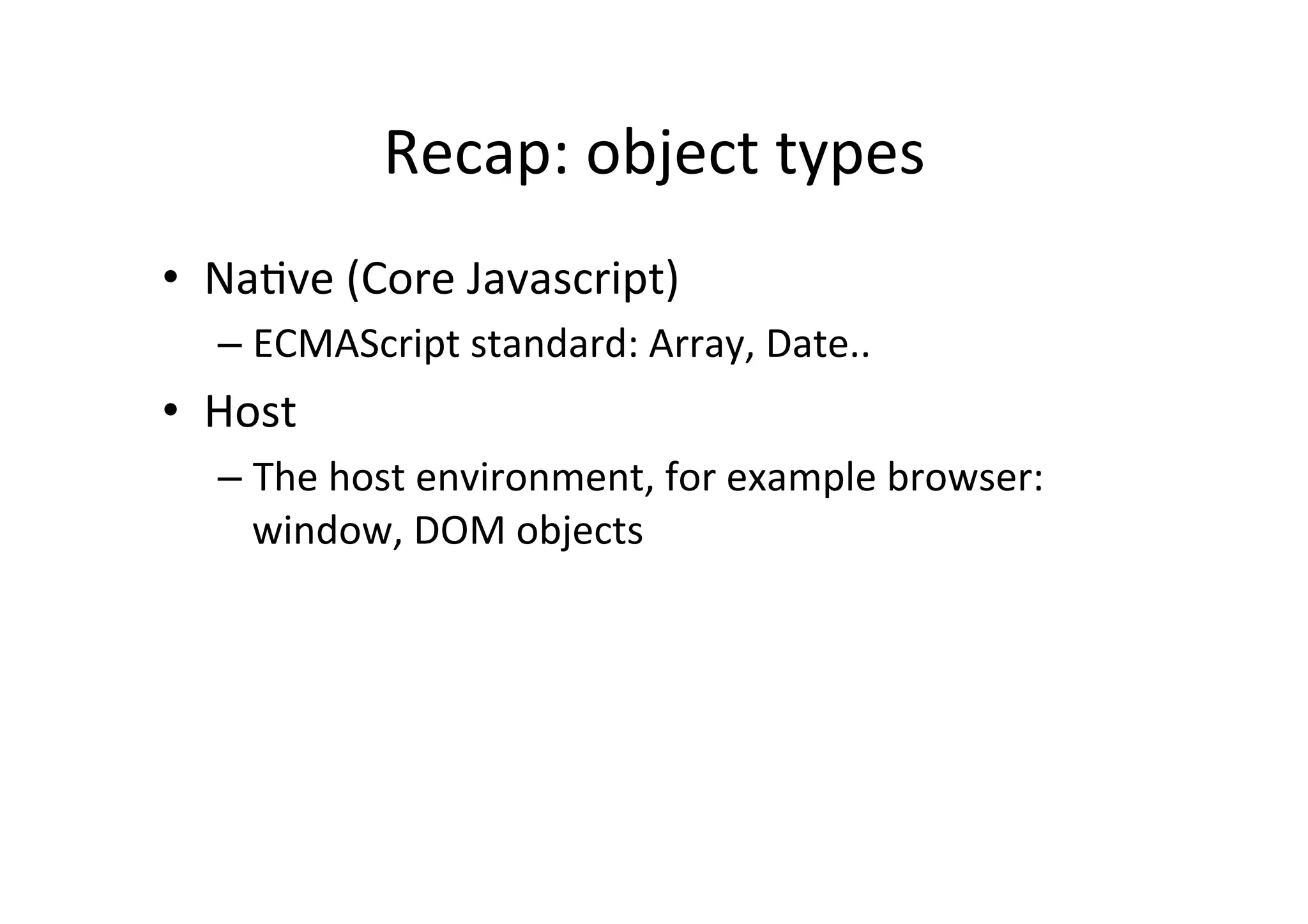
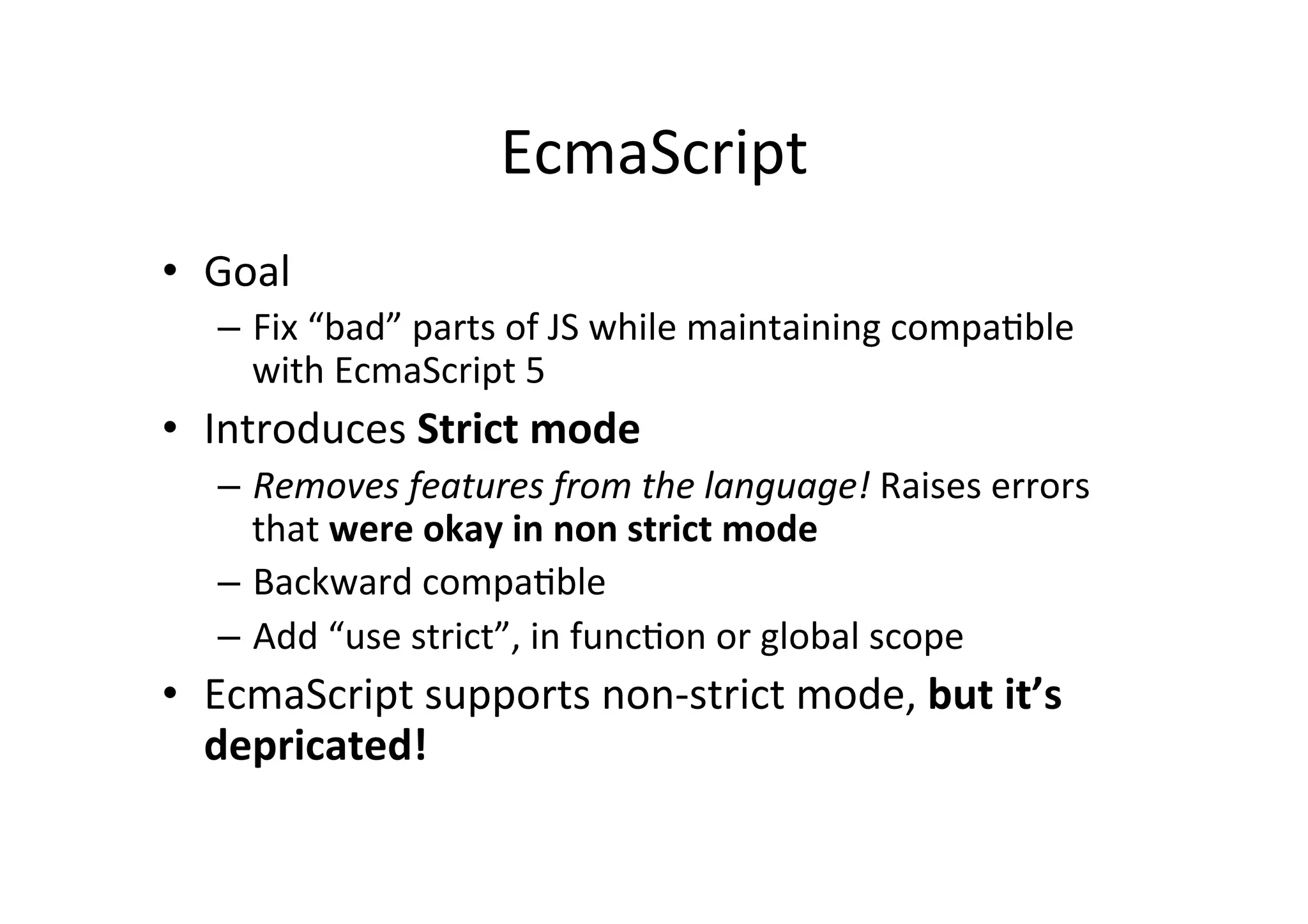
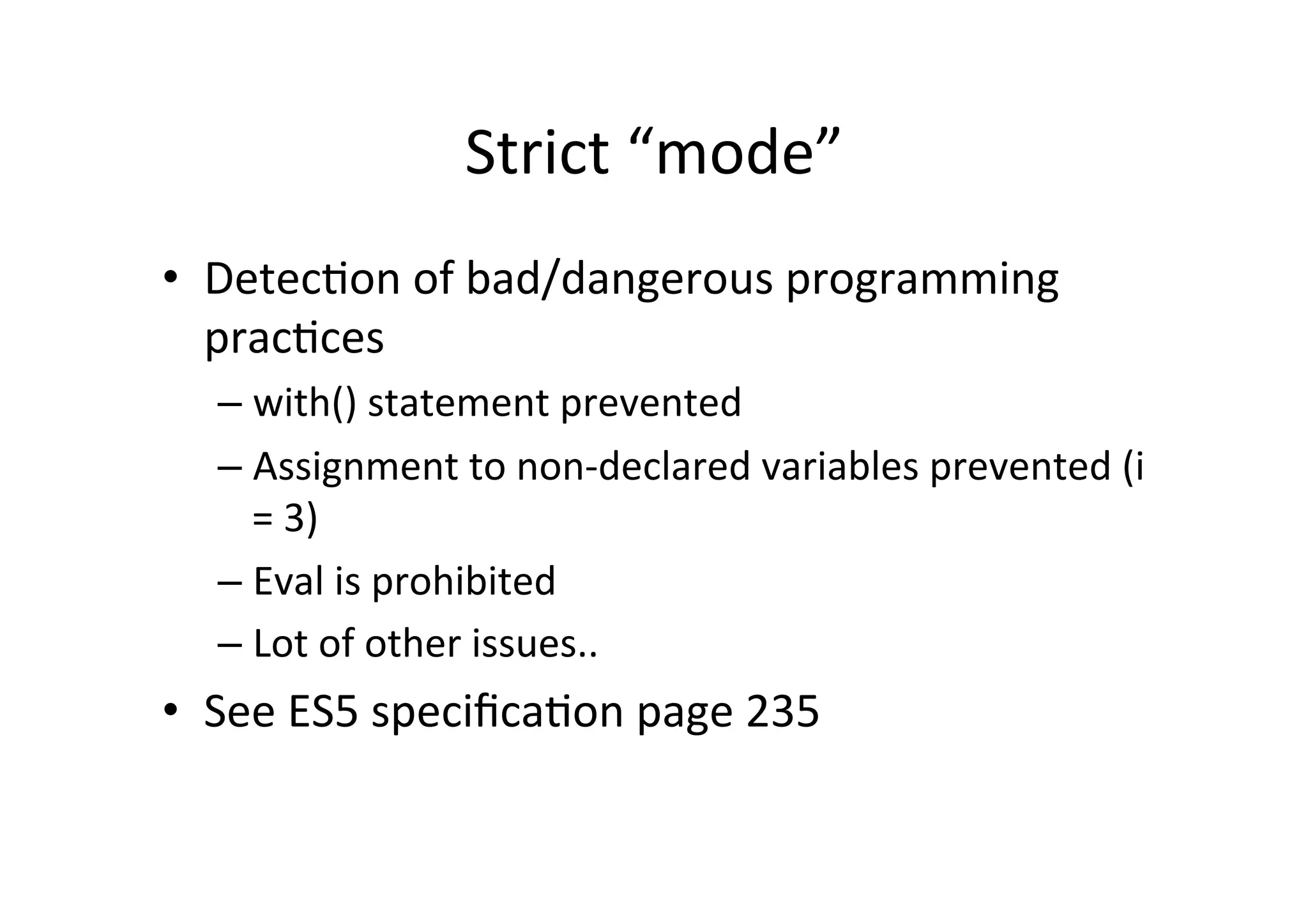
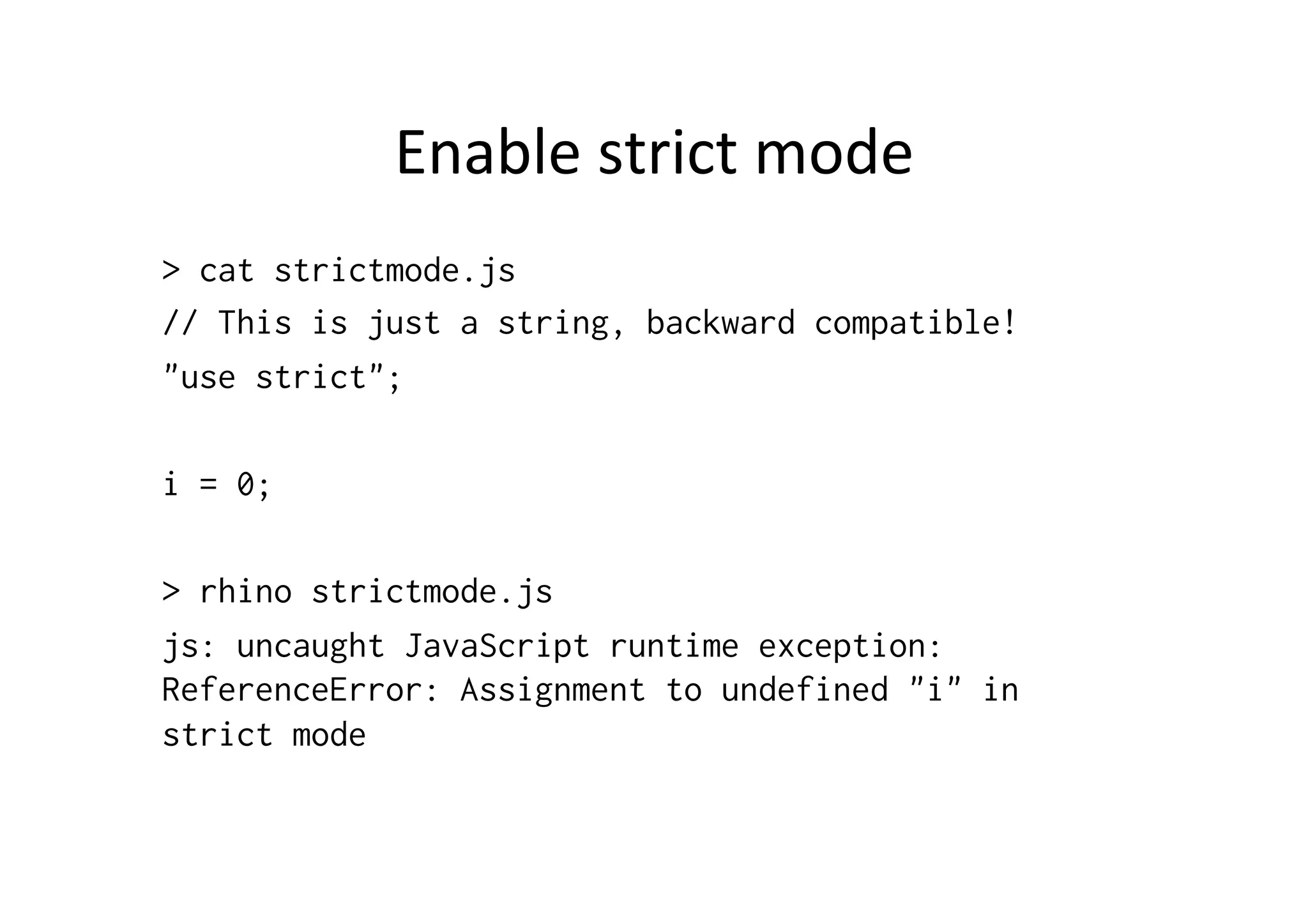
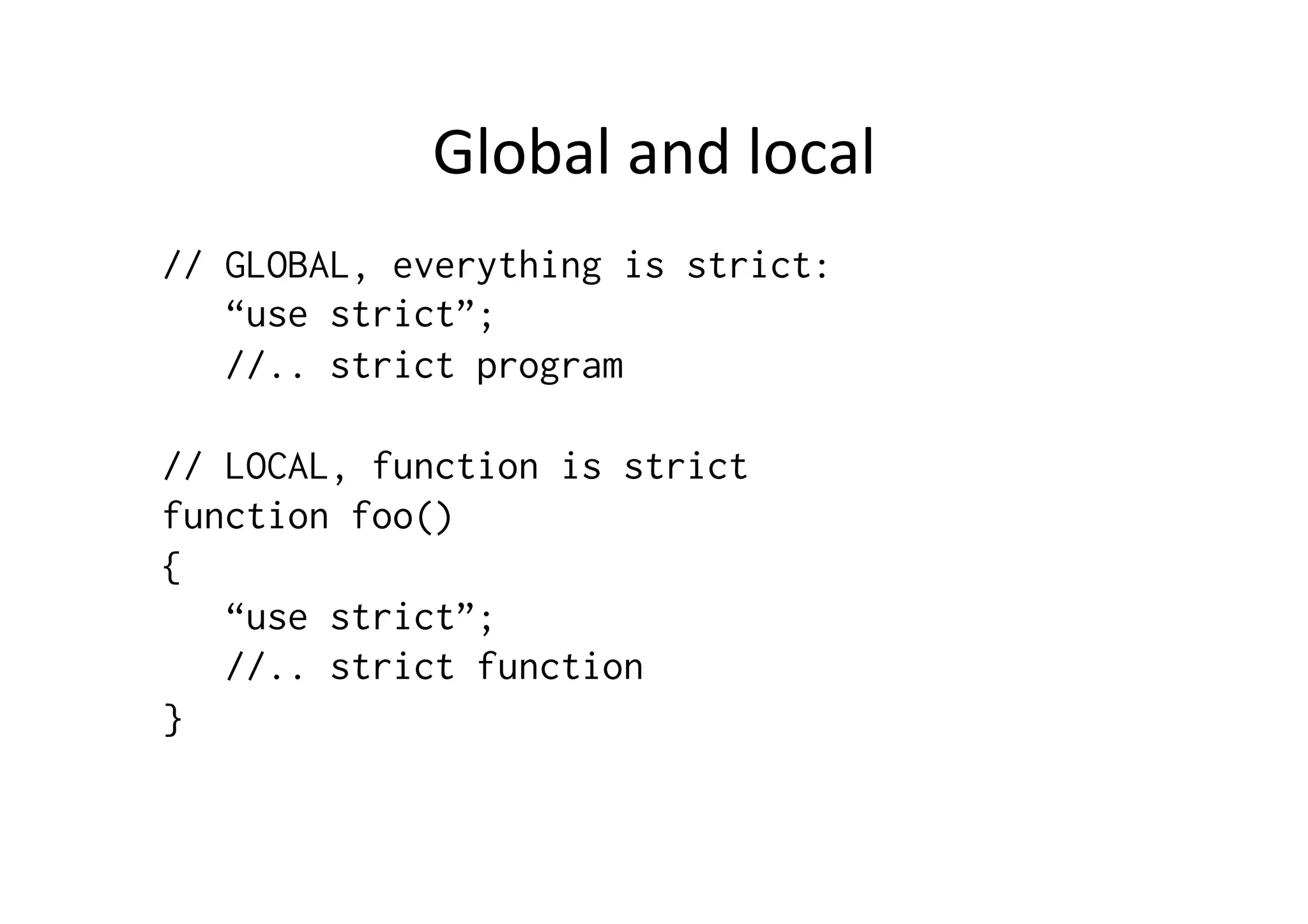
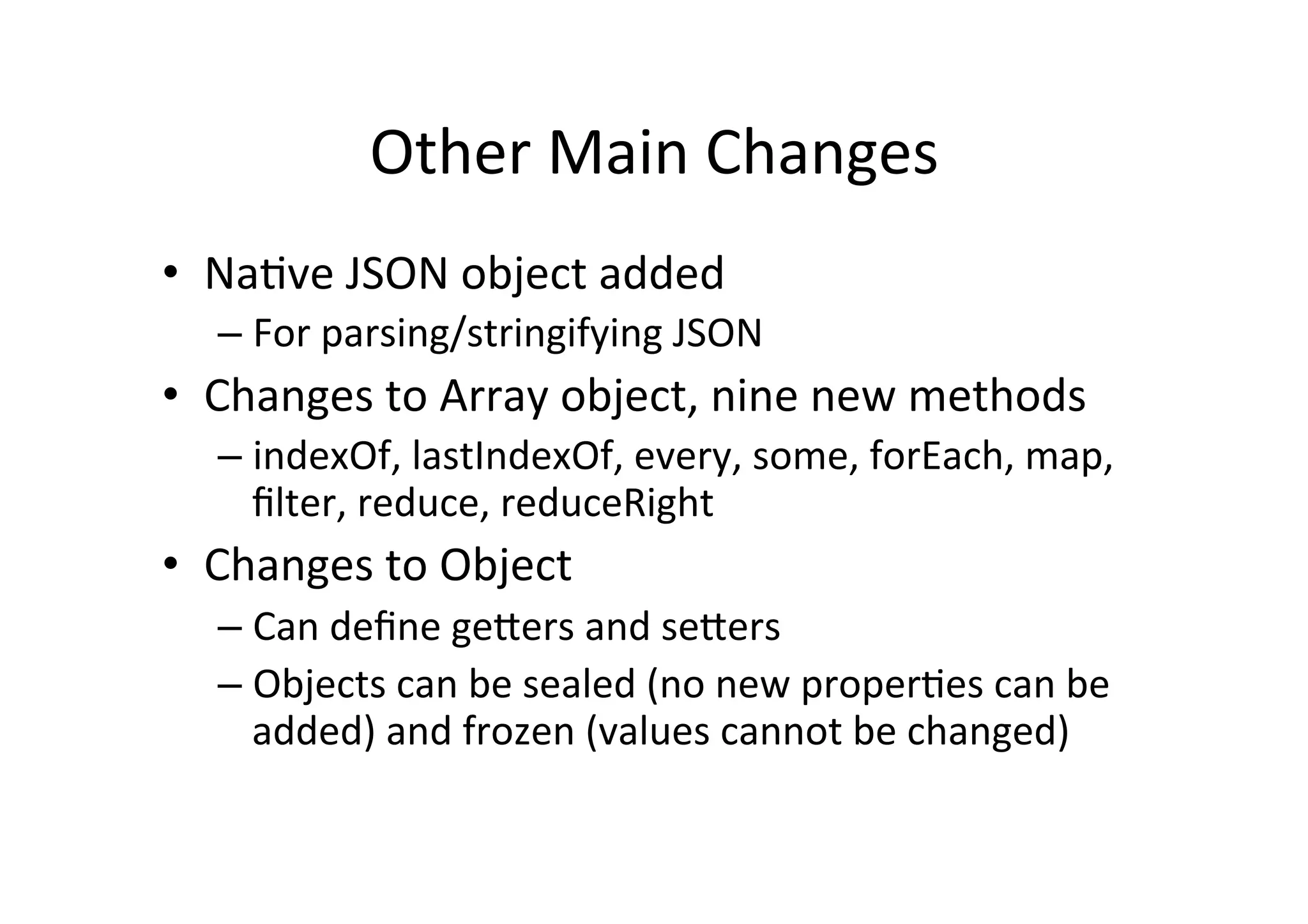
![JSON
and
Weather
Underground
myObject = JSON.parse(httpObj.responseText);
city = myObject.location.city;
now = myObject.forecast.txt_forecast.forecastday[0].fcttext_metric;
icon = myObject.forecast.txt_forecast.forecastday[0].icon_url;](https://image.slidesharecdn.com/ecmascript-130915054939-phpapp01/75/Short-intro-to-ECMAScript-20-2048.jpg)
![Examples:
Array
Object
var arr = ["apple", "banana", "carrot", "apple"];
print(arr.indexOf("apple")); // 0
print(arr.indexOf("daikon")); // -1
print(arr.lastIndexOf("apple")); // 3
function funkkari (entry)
{
print(entry)
}
arr.forEach(funkkari);](https://image.slidesharecdn.com/ecmascript-130915054939-phpapp01/75/Short-intro-to-ECMAScript-21-2048.jpg)
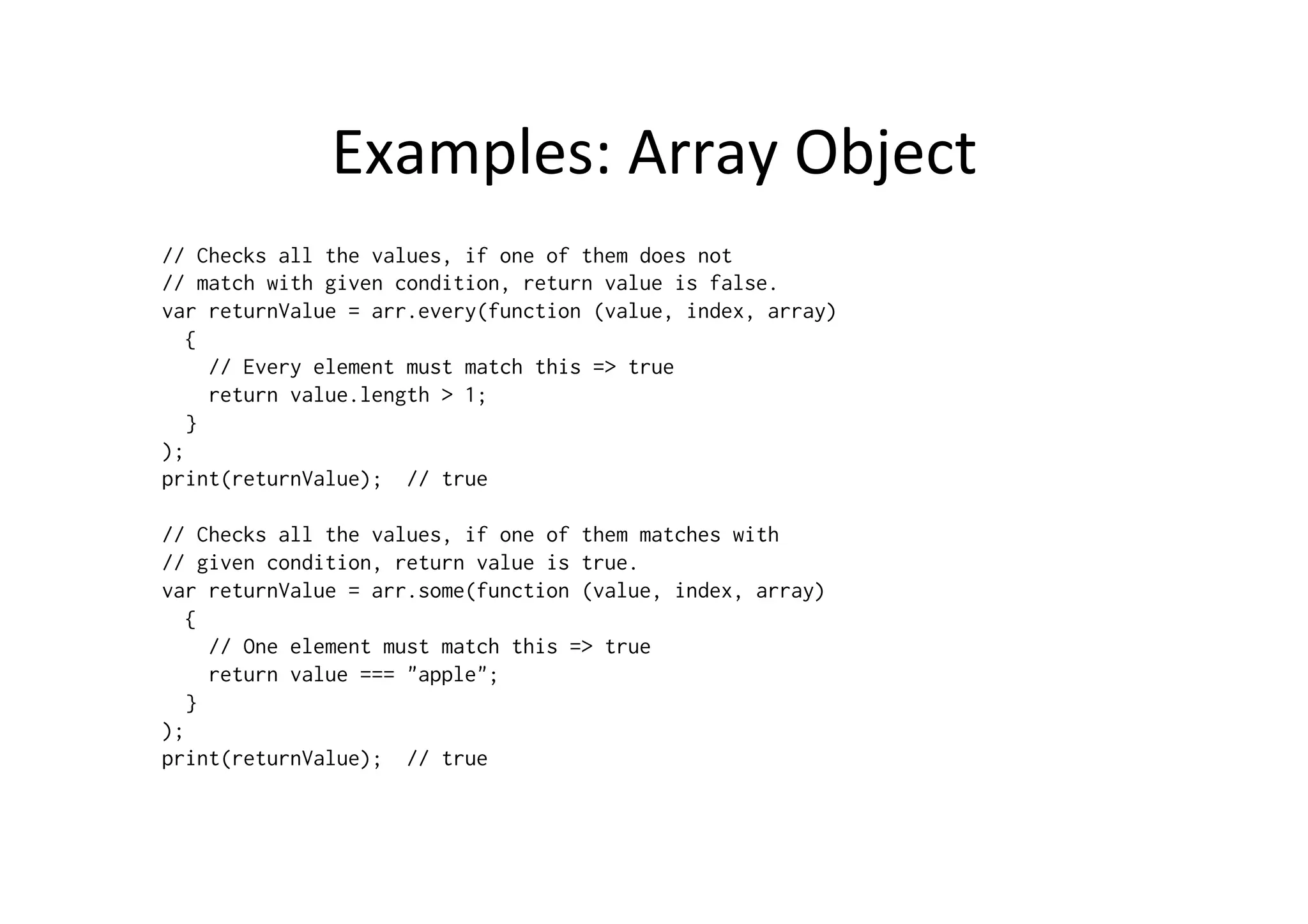
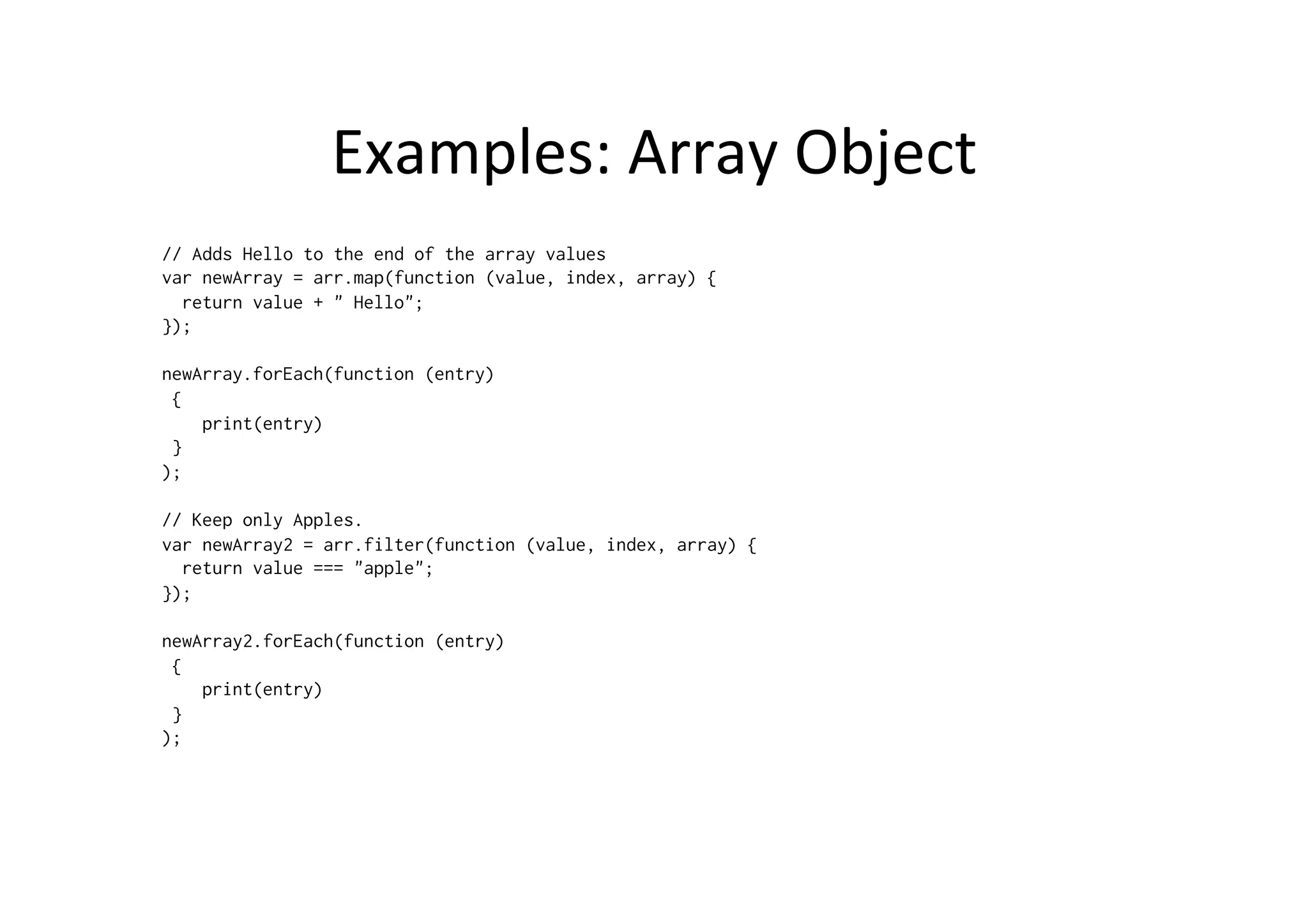
![Examples:
Array
Object
var value = [10, 20, 30, 40, 50].reduce(function (accum,
value, index, array) {
return accum + value;
});
print(value); // 150
var value2 = [10, 20, 30, 40, 50].reduceRight(function
(accum, value, index, array) {
return accum - value;
});
print(value2); // -50](https://image.slidesharecdn.com/ecmascript-130915054939-phpapp01/75/Short-intro-to-ECMAScript-24-2048.jpg)
